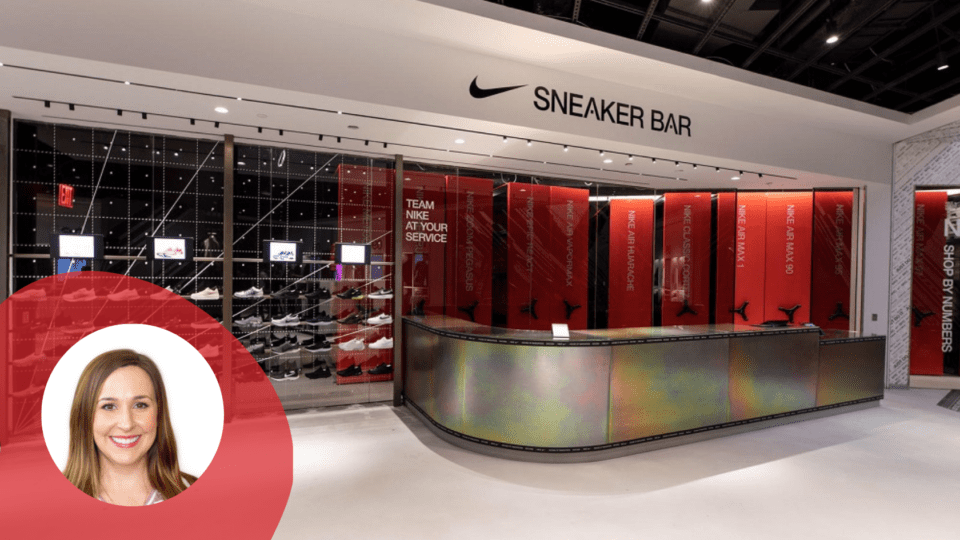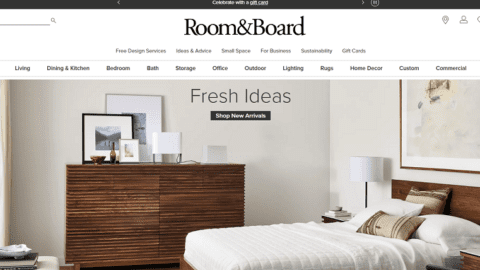The retail landscape has dramatically changed over the last few years, and one emerging trend appears to be here to stay. Phygital retail experiences, in which physical elements and technology coexist, offer opportunities to bring customers closer to your brand. Consumers expect a seamless interaction with a brand when and where they want it. Retailers need to make sure their in-store and online spaces can meet those demands.
With more people returning to in-store shopping as the pandemic has eased, brands are leaning into the phygital trend by designing physical stores that reflect popular elements of the online experience. For example, footwear retailer DSW created a “Warehouse Reimagined” store concept that elevates its owned brands, creates shops-in-shops and offers enhanced services.
Likewise, physical clothing stores for online powerhouse Amazon re-create the convenience of digital shopping. In its stores, only one sample of each clothing item is displayed, and consumers use QR codes in the app to request a specific size be sent to fitting rooms or to the counter for purchase.
Robust apps help create a cohesive transition between physical and digital storefronts. Apps that allow shoppers to preview and locate in-store inventory, do virtual try-ons, identify sales and cash in on personalized promotions and rewards are popular. In fact, most consumers (61%) report that they consider their smartphone “very important” while shopping in stores.
Advertisement
Technology in lighting, music, visual merchandising and other physical elements helps brands create immersive in-store experiences. TOMS recently used virtual reality (VR) technology to take in-store shoppers on virtual giving trips. The shoe brand, known for donating a pair of shoes to a child in need for each pair sold, provided VR headsets to enable shoppers to join TOMS employees and partners as they travel to communities around the world, measuring and outfitting children with new shoes.
Canada Goose’s Toronto store gives shoppers an idea of what it might be like to visit Antarctica by inviting shoppers to travel through a virtual snowstorm, a cold room that reaches -12°C (about 10°F), and a virtual mountain pass via an interactive floor that simulates ice cracking underfoot. Customers can try on and test apparel under these simulated conditions (no sales inventory is available on-site), and then purchases are shipped directly to their homes.
Personalization is also a key retail trend, and phygital approaches provide opportunities for a new level of tailored experiences. For example, Nike’s New York flagship store offers 55,000 square feet of unique experiences, including a shoe bar where customers can fully customize Air Force 1 shoes. Cameras and sensors surround a basketball court, treadmills offer visitors feedback on their performances, in-store trainers use the data to provide advice and assistants analyze results to make product recommendations.
Meanwhile, in the Nike app, shoppers can access early product drops and solicit styling advice from experts. The brand’s Nike Training Club app puts the brand’s gear to work with personalized home workouts, and its SNKRS app helps sneakerheads locate rare and highly sought-after pairs, plus sign up for personalized notifications on new drops.
This mashup of digital and physical spaces goes hand in hand with the trend of 43% of shoppers across generations saying they’re likely to spend more money with retailers that offer meaningful in-store experiences. Some retail analysts even predict this need for more retail experiential elements will lead to a resurgence of the shopping mall. That reimagined mall would likely include collaborations and partnerships between retailers across categories to create immersive experiences that blend retail, dining, entertainment and services instead of discrete stores displaying racks of goods.
Phygital’s Impact on Loyalty
What does the growth of these hybrid digital and physical syntheses mean for brand loyalty? The Lacek Group’s global research report reflects that today’s consumers increasingly value emotional drivers — such as exceptional customer service, data privacy, personalization and brand values. Loyalty must adjust to meet those evolving consumer expectations.
Brands that stay nimble and ready to adapt to changing consumer habits and expectations have an advantage in earning customer loyalty. Brands can cultivate consumer devotion by offering a mix of emotional and rational benefits and a personalized customer experience that is seamlessly efficient and enjoyable across all channels. The continued convergence of digital and physical shopping creates openings for brands to differentiate their loyalty offerings and create member-exclusive experiences.
As brands continue to leverage data to better understand their audiences, they can position themselves to innovate immersive, technology-driven phygital interactions that are truly personalized and memorable. Technology that recognizes loyal customers and harmonizes their interactions across channels helps brands acknowledge, reward, surprise and delight customers in every interaction — in-store, in-app and in meta spaces in between.
Ashley McMillin, Account Executive, is part of The Lacek Group, a Minneapolis-based data-driven loyalty, experience and customer engagement agency that has been delivering personalization at scale for its world-class clients for more than 25 years. The Lacek Group is an Ogilvy Experience company.









